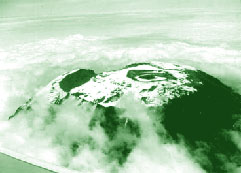TANZANIA
 One third of Mount Kilimanjaro's ice fields have completely melted in the last two decades and the rest of the mountain's ice could disappear by 2015, says Lonnie Thompson, a professor at the us -based Ohio State University, who made an aerial survey of the mountain's peak. He attributed the cause to global warming.
One third of Mount Kilimanjaro's ice fields have completely melted in the last two decades and the rest of the mountain's ice could disappear by 2015, says Lonnie Thompson, a professor at the us -based Ohio State University, who made an aerial survey of the mountain's peak. He attributed the cause to global warming.
Situated in northeastern Tanzania, near the Kenya border, Kilimanjaro is the highest mountain in Africa. Thompson warned that the disappearance of the mountain's ice fields might affect drinking water supply, agriculture and hydroelectric production. It will also put an end to the efforts of climatologists to deduce past climate by examining core samples of glaciers. Thompson's survey compared with previous mapping shows that 33 per cent of Kilimanjaro's ice has disappeared since 1980. Since 1912, at least 82 per cent of the ice has gone.
Related Content
- Tanzania economic update: overcoming demographic challenges while embracing opportunities
- Gender mainstreaming strategy and action plan for the disposal of polychlorinated biphenyls (PCB) in Southern Africa
- Sanitation and hygiene for all: 'make a splash!' partnership progress report 2022-2023
- East Africa Economic Outlook 2023: mobilizing private sector financing for climate and green growth
- The path that ends AIDS: global AIDS update 2023
- The costs of environmental degradation from plastic pollution in selected coastal areas in the United Republic of Tanzania
